The Value of Markers in Training
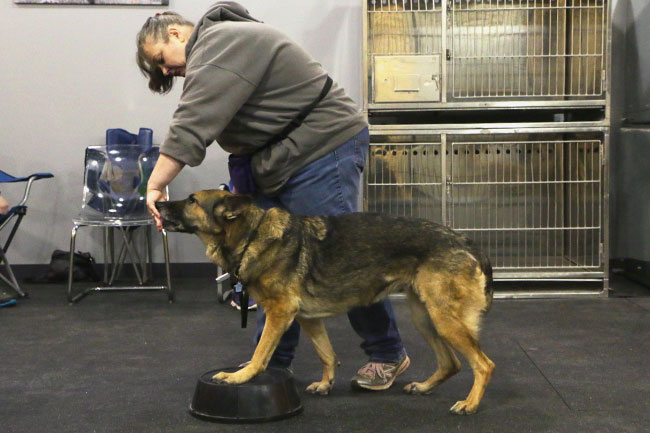
I am often asked about the value of markers (conditioned reinforcers and conditioned punishers) in our training. Do we need markers to train dogs well? How do they work? What advantages might they give us over more traditional communication systems? How should we create and implement them into our training? This article will attempt to acquaint those of you who are unfamiliar with markers with their use, and perhaps give those of you who use markers a better understanding of their power, as well as some ideas on how you might expand their use in your training.
What is a Marker?
What is a marker? A marker is a dog trainer's term for a stimulus (typically a word or sound, although it could be a visual stimulus as well) that signals (precedes) reward or punishment repeatedly until the stimulus itself becomes a reward or punishment via classical conditioning. The use of a clicker is ultimately the same thing as a reward marker. You will hear trainers use terms like conditioned reinforcer, conditioned punisher, secondary reinforcer, secondary punisher, or bridge…these are simply other ways of saying marker. For the purposes of this article we will use the term reward marker for a sound that signals reward, and punishment marker for a sound that signals punishment. Once conditioned, a marker allows a trainer to reward or punish their dog with a sound in lieu of the primary reward (food, toy, etc.) or a physical aversive (correction). Conditioning a marker is a very simple process in which the trainer produces a sound and follows it with either a reward or punishment repeatedly, but there can be a wide variety of different markers that signal different types of rewards or punishers. For instance, the trainer could create a marker that releases the dog to access a reward delivered by the trainer, one that asks the dog to continue performing the behavior that is being rewarded while it receives the reward, one that releases the dog to a remote reward (one away from the trainer), one that signals a toy reward, one that signals a food reward, one that signals negative punishment (withholding reward), one that signals positive punishment (some aversive applied to the dog), etc. The value of the marker is governed by whatever the dog has repeatedly received immediately after the marker during training. For example, if the trainer has conditioned a marker using kibble as a reward, then the marker would be roughly equivalent to a piece of kibble, if conditioned with the use of steak as a reward, then the marker would be roughly equivalent to a piece of steak, if conditioned with a toy, then roughly equivalent to a toy reward, etc. The same principle would apply to punishment markers…the intensity of the marker would be governed by whatever consequences had followed the marker in training, so different markers can have different values depending on the conditioning process.
What Are the Advantages of Using Markers in Training?
What are the advantages of using markers in training? There are certain types of behaviors, and certain situations, that UKC ARTICLE THE VALUE OF “MARKERS” IN TRAINING WRITTEN BY MICHAEL ELLIS All-Breed Sports Newsletter March 2020 pg. 3 trainers certainly wouldn't need a marker to train. For instance, one could teach a sit, down, or recall without the use of a marker by simply rewarding the dog immediately after they have completed the behavior, but it is not always feasible to reward certain behaviors in a timely fashion. For instance, what if the dog is at a distance, or the reward isn't readily available to deliver? The power of the marker is that the behavior can be marked (rewarded) as soon as the dog completes it, even when the primary reward isn't immediately available. Another situation in which markers are indispensable is when trainers are in the process of moving the reward out of sight. In initial training we frequently have rewards ready to deliver, in our hands or in a bait pouch, but over time it is essential that we teach the dog to make us produce rewards that are not visible to the dog. Markers make this possible. We can hide the reward, have the dog perform the behavior, mark it, and then produce the reward a number of seconds after the completion of the behavior, so we are less reliant on having the reward immediately available. There are also certain types of behaviors that are impossible to reward while the dog is performing them. Let's take eye contact, or focus, as an example. If a trainer were trying to reward eye contact without the use of a marker there would be significant difficulties. The dog would be engaged in the behavior and the trainer would try to capture it, but when the trainer attempted to deliver the reward, the dog would abandon its focus to access the reward, the last thing the dog would do before receiving the reward would be to look away from the trainers eyes and toward their hand…the exact opposite of focus. The same holds true for teaching a dog to hold something in its mouth without chewing, like a dumbbell for competition obedience, or other personal items for service work. It isn't possible to reward a dog while it has something in its mouth, so a marker is indispensable for capturing the calm hold while the dog is actually in the act. The same principles hold true for the use of punishment. It isn't always feasible, especially with the use of negative punishment, to make the dog associate the punishment with a specific behavior, either due to distance, where the dogs focus lies, or physical mechanics. So, a marker allows us to tell the dog exactly when the infraction occurred, even if the consequence follows after the fact.
Another significant advantage of marker use over traditional training methods is connected to a concept we call reward placement. In the early stages of training new behaviors, where and how the trainer physically delivers the reward makes a big difference in the long-term integrity of the behavior, and we call this reward placement. Let's say a trainer is trying to teach a dog a correct front (sit straight and close in front of the handler), but every time they deliver the reward, they use their right hand. Eventually the dog begins to sit crooked facing the right side of the trainer's body. Using a marker allows the trainer to separate the production of the reward from the completion of the behavior. The dog sits front, the trainer marks the behavior, breaks out of position, moves away from the spot, then delivers the primary reward a number of seconds later. This prevents the dog from noticing that the reward is coming from the right side of the body, and because the marker itself is a reward, the dog is reinforced for the straight front.
The same principle holds when working on many other behaviors that we create and maintain through proper reward placement. Focused heeling is another excellent example. When teaching a dog to focus heel properly, trainers frequently have a reward ready to deliver (in their hand) and deliver it when the dog is focused and in the correct position. If a trainer were to reach across the front of their body to deliver the reward the dog would gradually begin to move itself into a position that makes it easier for them to access the reward coming from the right, and as a consequence would begin to forge (walk in front of the handler), crowd (touch the handlers leg), and crab (walk sideways like a crab). We prevent this by delivering the reward with our left hand above the dog's head, but over time the trainer needs to get the reward out of their hand and out of sight. Markers allow the trainer to keep the gains they made through reward placement when it is no longer efficient to have the reward delivered is a specific spot. The dog is heeling properly, the trainer has the reward hidden on their body, or placed remotely, they see the behavior they want, they mark it, then break off from heeling, move away from the dog, and produce the reward a number of seconds after marking it. Again, by doing this the trainer avoids having the dog focus on where the reward is produced, and are thus able to maintain their criteria over time.
Markers also allow trainers to give rewards and punishments without actually using primary reinforcers or punishers. Once conditioned a marker is a reward or punishment, and although the trainer needs to maintain the value of the marker through classical conditioning by continuing to deliver a consequence (good or bad) a significant portion of the time, the markers can be used without consequence on occasion and still have the full effect of a reward or punishment.
Most trainers use a fairly straight forward set of markers in their training. One marker that releases the dog to access a reward, one that says keep doing what you are doing, and one for telling the dog they are wrong (punishment), and these are powerful tools for precise communication, but this is just scratching the surface of the power of markers. Be creative! As we alluded to before, you can use different markers for a wide variety of different rewards and punishments, as well as different reward placements.
Although this article is a very basic treatment of marker training and its advantages, I hope that it has piqued your interest, and that you will explore the concepts further and incorporate markers into your training. I think you will be very pleased with the results. Happy training!
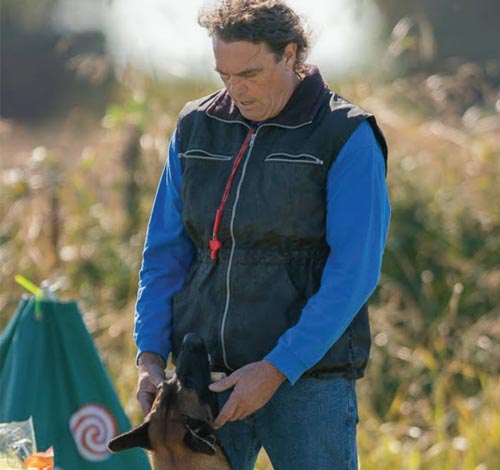
About Michael Ellis
Michael is an internationally renowned dog trainer and teacher with nearly forty years of experience in competitive dog sports and companion dog training. Michael started his career as a teacher of dog trainers in 1996, when he began giving seminars and clinics to training clubs and organizations around the world. Over the next thirteen years he taught extensively to a very diverse group of professionals and hobbyists, from competitive sport trainers, police departments, and the US military, to search and rescue groups, service dog agencies, and pet dog trainers.
During this period Michael taught over three hundred seminars in the US, Canada, and South America, that comprises more than one thousand days of lecture and practical work, not to mention many hours of private training and coaching. Michael's clear, concise, and patient style made him one of the most popular coaches of trainers in the country, and he did much to popularize the use of reward based techniques in the world of protection sports.
In 2009, Michael stopped traveling full time in order to open the Michael Ellis School for Dog Trainers. In the ten years since the opening of the school he has helped more than one thousand individual students, the majority of whom have taken multiple classes, on their journeys to become better trainers. Many MES graduates have gone on to be highly sought-after professional trainers, and respected members of the training community at large.
In 2008, Michael started collaboration with Leerburg Enterprises and Ed Frawley to produce training videos and online classes. This partnership continues to this day. These resources have helped the growth of many thousands of trainers and aspiring trainers around the world.
In addition to teaching, Michael has competed in, and done decoy/helper work, for multiple club and national level events in both IPO(IGP) and the ring sports (Mondioring and French ring). He was one of the first Mondioring decoys certified in the US, and one of the first members of USMRA. He has coached national champions in several disciplines, and many national and international competitors, but he is perhaps most proud of the now thousands of club level and beginning trainers that he has helped to improve their communication, knowledge, and physical skills.
Michael, in partnership with trainer Lisa Maze, has bred Malinois under the kennel name Loups du Soleil for more than twenty-five years. Loups du Soleil is one of the most successful breeders of working Malinois in North America.


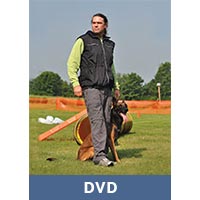



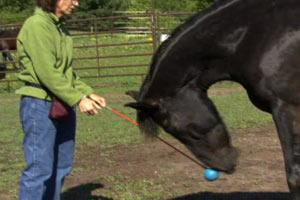
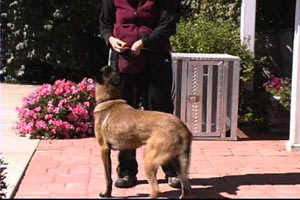


0 Comments
Ask Cindy
Sorry, adding comments is currently disabled.